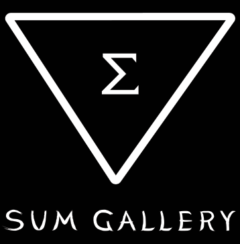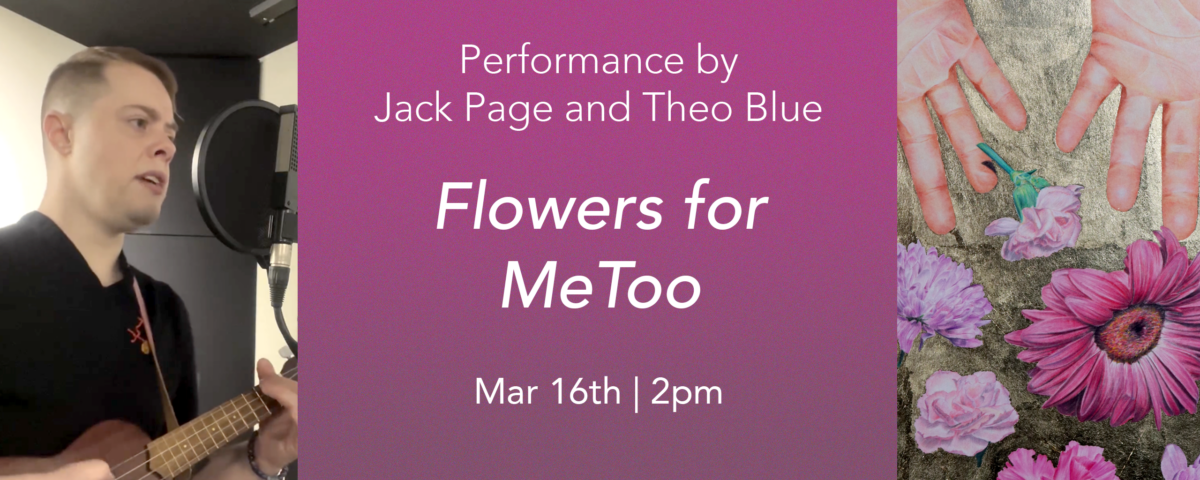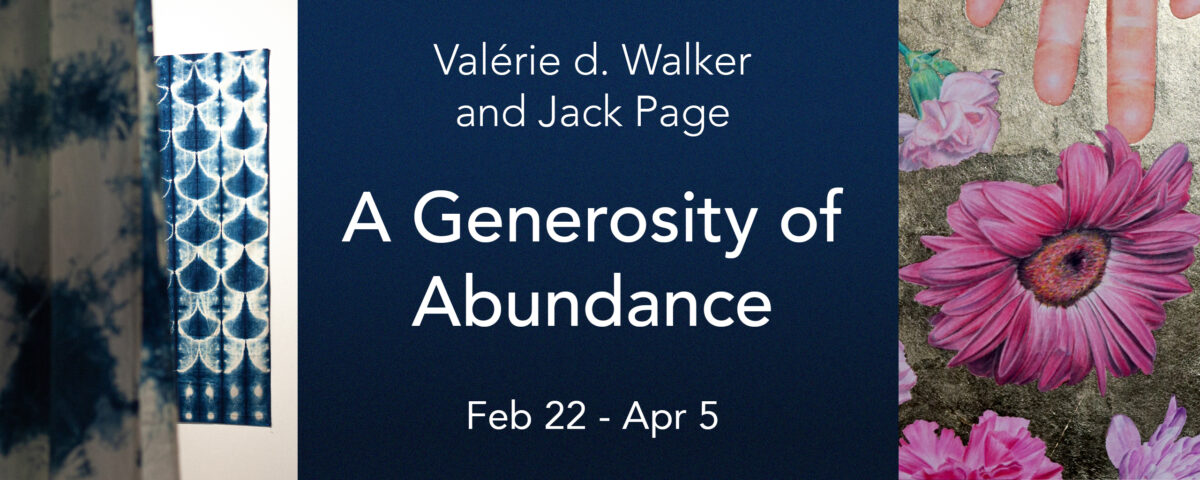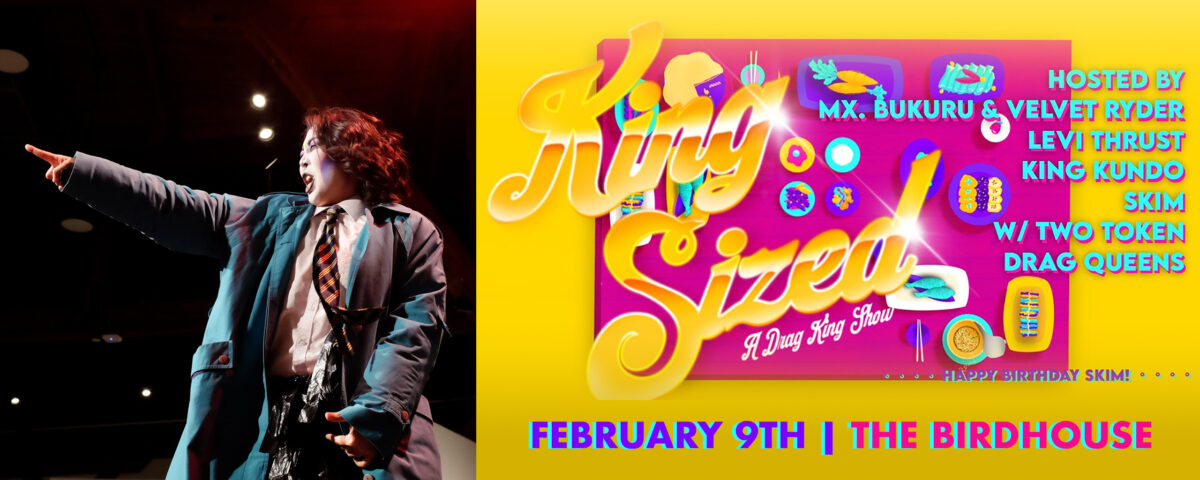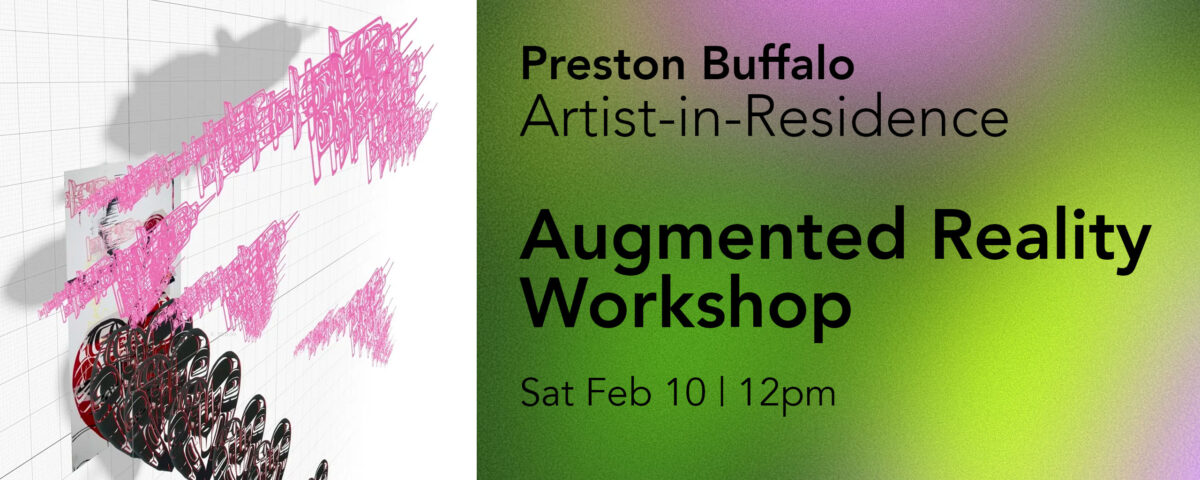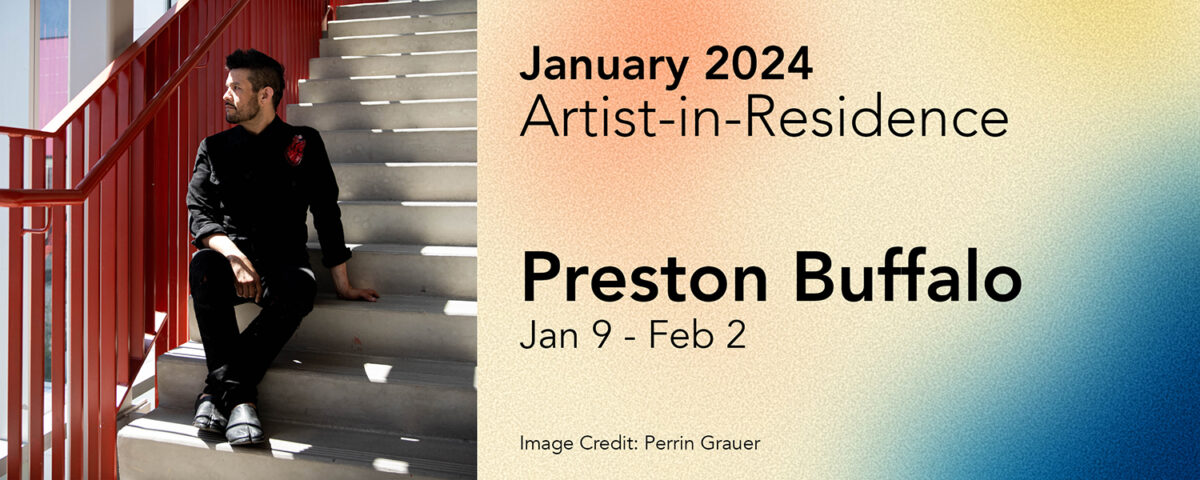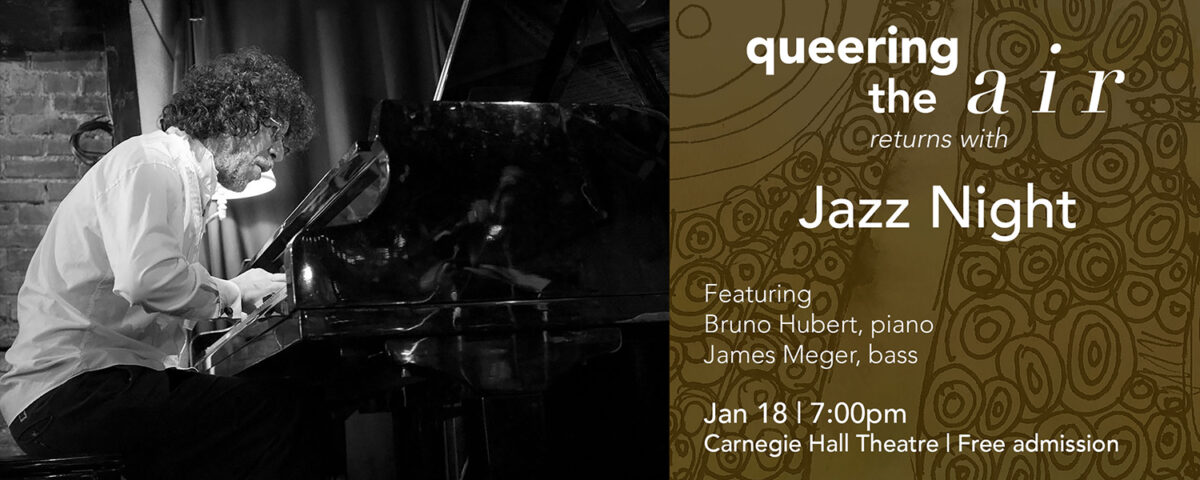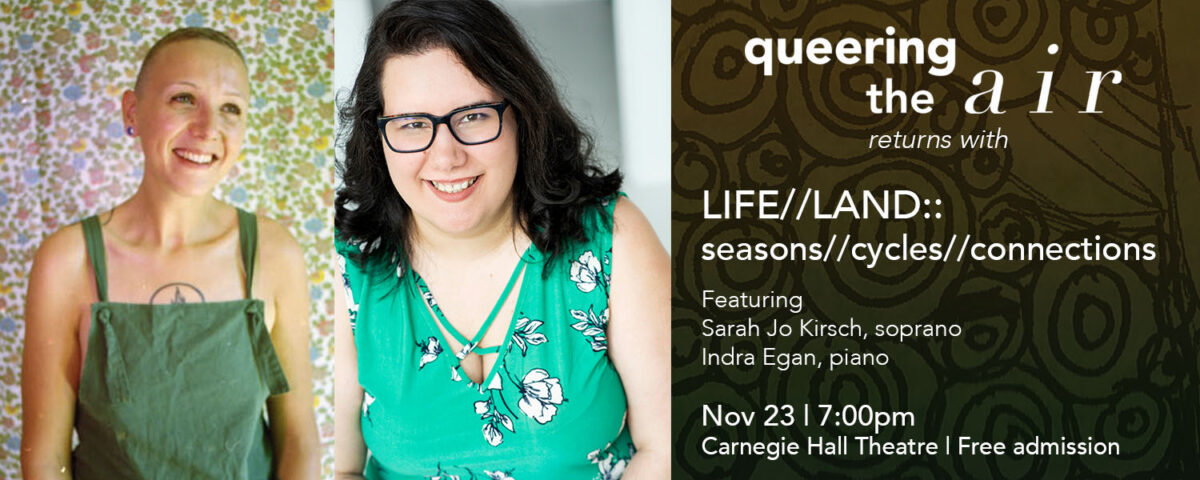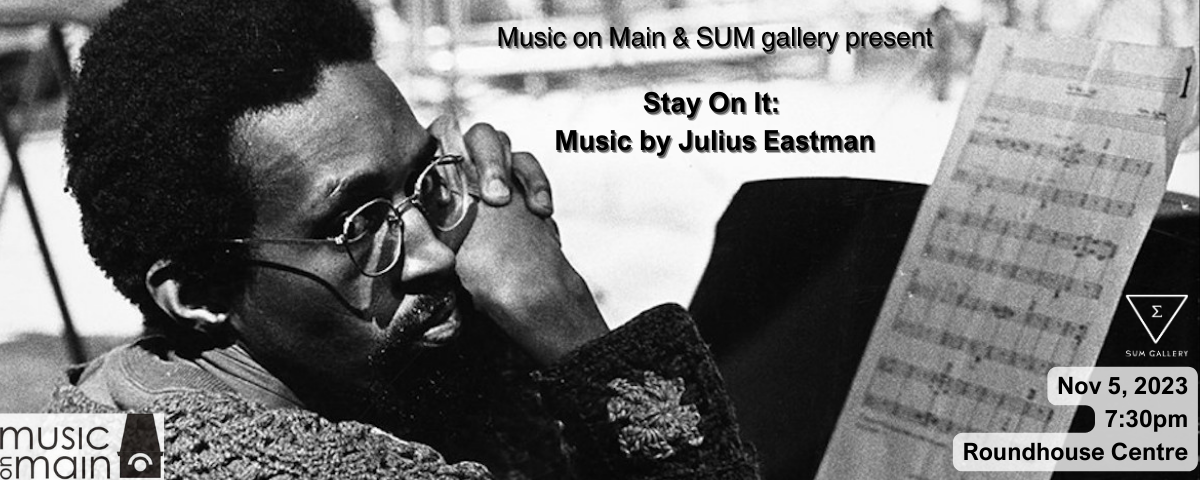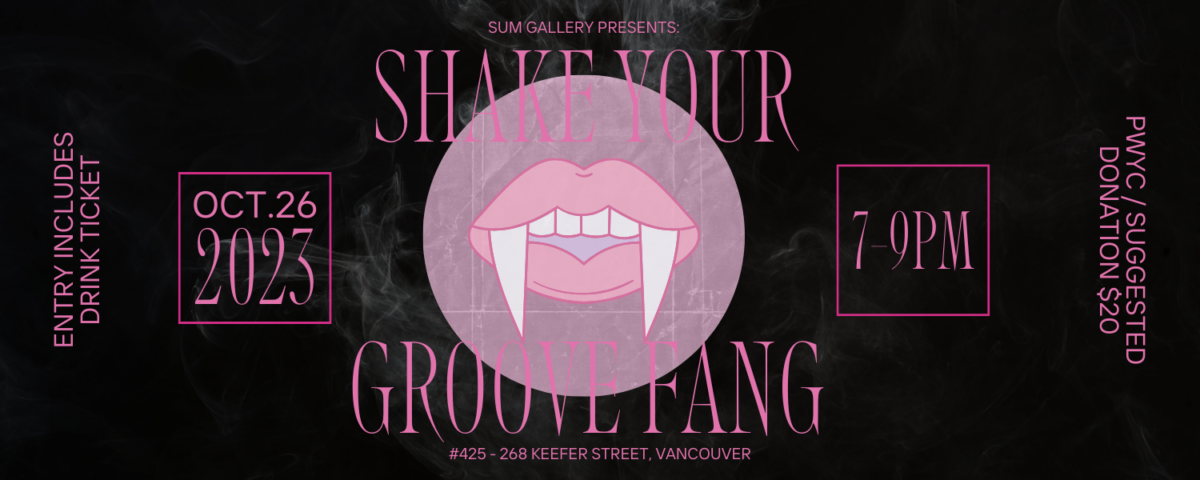Author: tempadmin
A Generosity of Abundance—Valérie d. Walker and Jack Page
Feb 22 – Apr 5, 2024
OPENING RECEPTION: FEB 22, 6 to 8 pm
PERFORMANCE by JACK PAGE & THEO BLUE: MAR 16, 2 pm
As our community navigates a world of unprecedented environmental and political upheaval – all transpiring against the backdrop of a lingering pandemic –Transmedia Fibres-rooted artist and Indigo Griot Valérie d. Walker has responded by transforming SUM gallery into a sanctuary of Queer Joy: a place where “Queer reality is infused with self love and the power of environmental transformation.” Walker, whose work is shaped and informed by her African Diasporic, Scottish, Japanese, and Indigenous Hawaiian heritage, has envisioned A Generosity of Abundance as an immersive exploration of the restorative power of Water. Finding inspiration in the metaphysical transformations caused by traversing a Labyrinth, Walker’s large-scale indigo-dyed fibre pieces invite the viewer to explore and flow along an uninterrupted sensorial path towards meditative and therapeutic relief, much like water’s uncanny ability to seek out a path of least resistance; while fibre-art sculpture/installations create interior “indigo refuges”.
In keeping with the spirit of Queer, joyous transformation, on March 16 the exhibition expands to include the work of Vancouver artist Jack Page, whose practice encompasses illustration, altered book art, papermaking, printmaking, photography, musical performance art, and Dis/Ability, Mad/Neurodiverse and 2SLGBTQIA+ community-based projects. His multimedia triptych, Flowers for MeToo, speaks to how all genders experience gender violence, especially trans and nonbinary people, using gold leaf to mark the healing body as divine and flowers as a form of healing and transforming trauma. Like Walker, who is well known for her enviro-conscious dye work, Page’s material art practice focuses on minimizing waste by incorporating used, natural, and foraged materials, and upcycling waste products, such as paper and medical waste.
Running from February 22 to April 5, A Generosity of Abundance spans two key events in the QTBIPOC calendar: Black History Month (February) and International Transgender Day of Visibility (March 31). To this end, the exhibition is punctuated by an opening reception on Thursday, February 22, from 6 – 8pm and a musical performance piece by Jack Page and guitarist Theo Blue on Saturday, March 16 at 2pm.
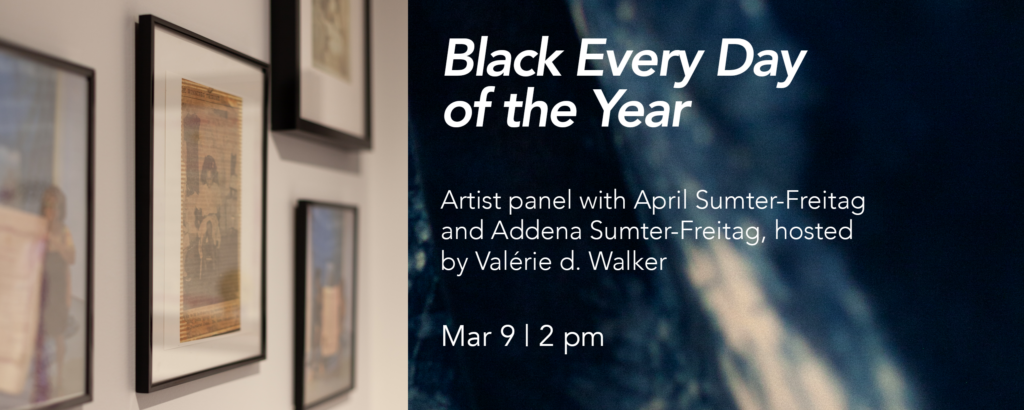
Join artist Valérie d. Walker for a discussion with April Sumter-Freitag and Addena Sumter-Freitag on Queer Black history in Vancouver.
Join us at SUM gallery on Saturday, March 9 at 2pm for Black Every Day of the Year: a special discussion panel featuring A Generosity of Abundance artists Valérie d. Walker, Addena Sumter-Freitag, and April Sumter-Freitag. As seventh- and eighth-generation Black Canadians, Addena and April Sumter-Freitag hold a special place in Canadian Queer Black art and history; with Walker, they will imagine, joyously laugh, celebrate Historical Black Strathcona, and create Afro-Futuristic visions that extend well beyond Black History Month. The afternoon includes a special screening of April Sumter-Freitag’s short film, Out, Black + Proud in BC, which celebrates its 20th anniversary this year.
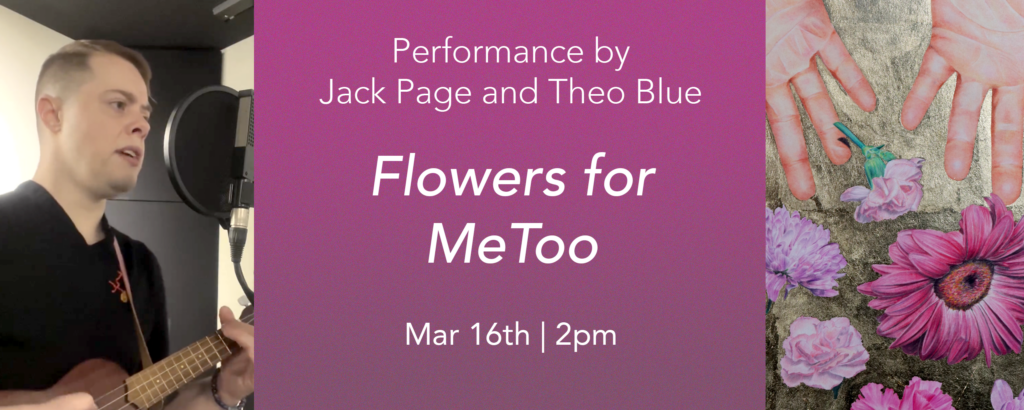
A musical performance piece by Jack Page and guitarist Theo Blue, Flowers for MeToo speaks to how all genders experience gender violence.
Join us at SUM gallery on March 16 for a special musical performance by Jack Page and Theo Blue, marking the expansion of our exhibition, A Generosity of Abundance.
As we transition from Black History Month to International Transgender Day of Visibility, our duo exhibition featuring the work of Valérie d. Walker and Jack Page expands to include Page’s beautiful triptych, Flowers for MeToo. We celebrate the arrival of Jack’s work with an in-gallery performance of the song Flowers for MeToo, composed and performed by Jack, with his musical collaborator Theo Blue.
Be among the first to experience the final manifestation of our exhibition and hear this intensely personal performance by Page and Blue.
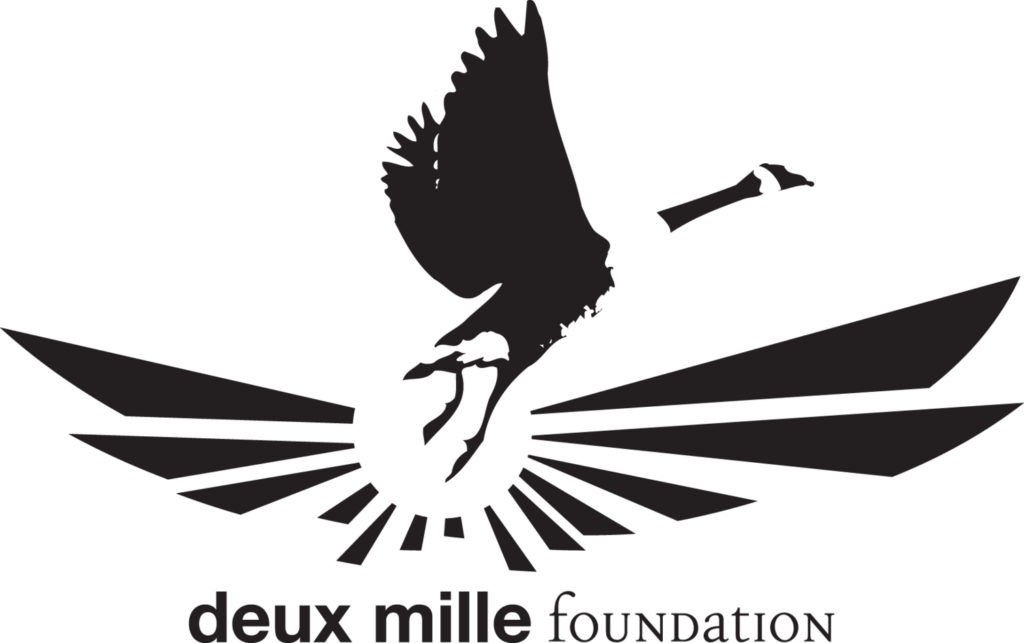
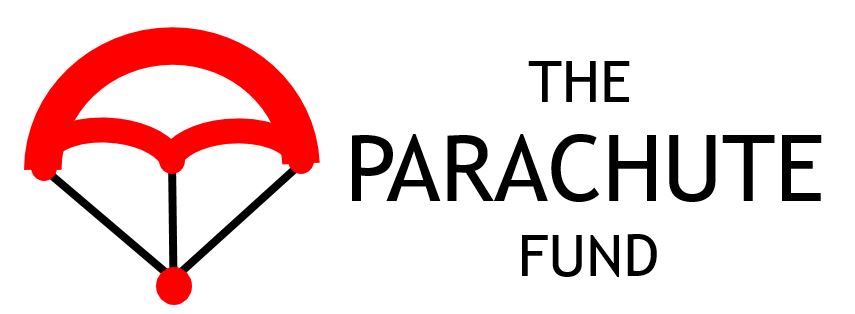
KING SIZED—A Drag King Show
Feb 9, 2024 | 9:30pm
SUM gallery is proud to be official sponsor for KING SIZED: A Drag King Show!
Join us at the Bird House on February 9th, 10pm-2am, for a special King Sized to celebrate SKIM’s 30th Birthday. This show will feature the biggest cast yet, with a majority of Black performers in honour of Black History Month. King Sized will be hosted by @mx.bukuru and @velvetryderdrag; with performers @levi.thrust, @kingkundo_ , guest DJ @softieshan and the birthday King himself, @skimisking. And as it’s an extra special birthday celebration there will be two token Drag Queens….who can they be?
We are excited to be partnering with SKIM once again and wish him a very happy birthday! LONG LIVE KING SIZED! @longlivekingsized
Get tickets today!
AR Workshop—Preston Buffalo
Open House—Preston Buffalo
Artist Residency—Preston Buffalo
Jan 9 – Feb 2, 2024
Multimedia artist Preston Buffalo joins us at SUM gallery for a four-week artist residency (Jan 9 – Feb 2). During this time Buffalo will develop a number of projects in advance of his solo exhibition in April, including site-specific AR, analogue photography, 3D photography, and projections.
In June 2023 we featured Preston’s stunning AR work, Cosmic Connections: Queer Indigenous Astronomy (A View From Above and Below), at QAF’s Queers In Space, in partnership with Little Chamber Music. Following this, Buffalo participated in Mmaandaawaabi (see a wondrous sight) at the Agnes Etherington Art Centre in Kingston, an exhibition that showcased Indigenous artists whose digital practice reflects upon and engages with Indigenous worldviews and epistemologies through new media and AR technology.
To cap off Preston’s residency, we’re pleased to announce an Open House on February 3 and an Introduction to Augmented Reality Workshop on February 10. Read on for more details!
Preston Buffalo, a Two-Spirited Cree artist originally from Treaty 6 Territory, currently resides in the unceded Coast Salish Territories of British Columbia. His interdisciplinary practice involves the exploration of personal Indigenous iconography and symbolism, utilizing photography, alternative photo processes, and digital illustration. Motivated by the challenges faced by Indigenous communities, Preston’s work touches upon themes such as mental health, cultural and linguistic loss due to displacement, the impact of the residential school system, and the process of assimilation. His overall objective is to create visual expressions that encourage new perspectives on Indigenous art, emphasizing its significance in contemporary society and its contribution to an ongoing dialogue.
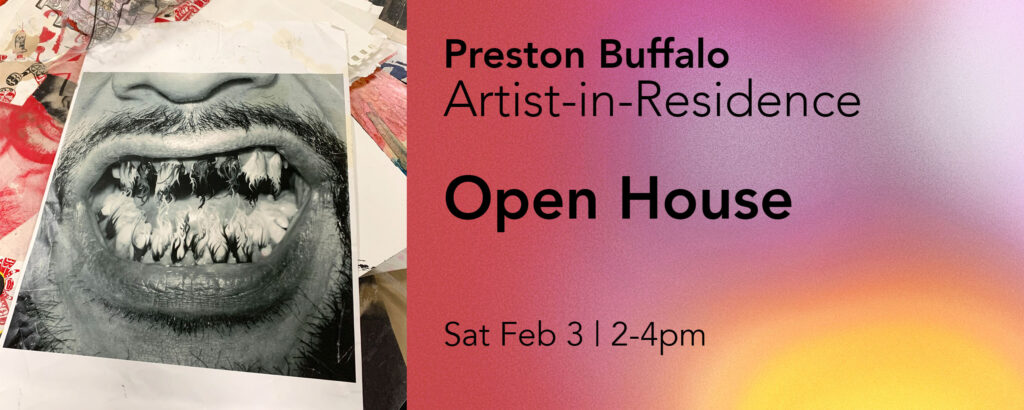
Join us at SUM gallery on Saturday, February 3rd, from 2pm-4pm, as we celebrate Preston Buffalo’s residency with an Artist-in-Residence Open House. This will be a unique opportunity to meet Preston, experience his most recent work with 3D photography and Augmented Reality, and get an exclusive look at some of the work that will inform his solo exhibition at SUM gallery in April, Go Home Yuppie Scum.
Augmented Reality stands as the contemporary evolution of stereoscopic and 3D photography, seamlessly merging the digital and physical realms… AR transcends the visual depth limitations of its predecessors, creating immersive, interactive, and contextually rich experiences. This transformative technology not only enhances our perception of reality but reshapes the way we interact with and interpret the world around us. – Preston Buffalo
Saturday, Feb 3
2 – 4pm
Location: SUM gallery (4th floor, 268 Keefer St.)
This event is free to attend and does not require registration.
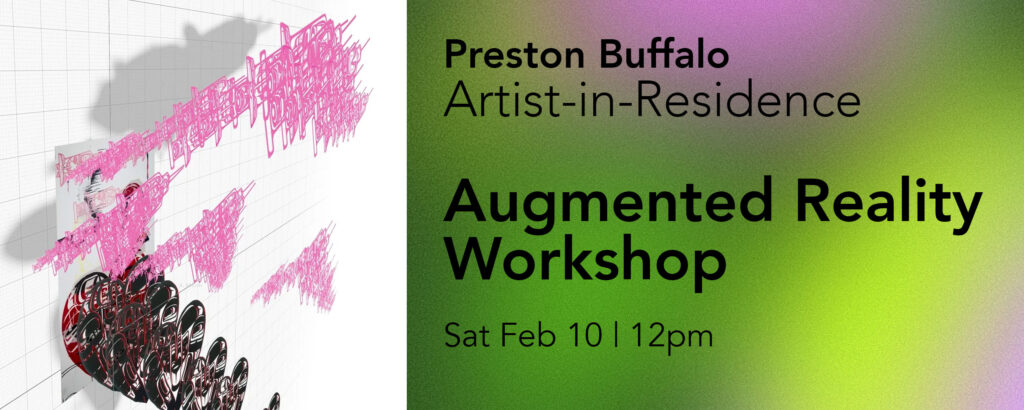
*The AR Workshop event is currently sold out. Please email info@queerartsfestival.com if you would like to be added to the waiting list should there be an opening.*
We are pleased to offer an Augmented Reality Workshop led by SUM gallery artist-in-residence, Preston Buffalo, on Saturday, February 10th, from 12pm-4pm. Augmented Reality (AR) is an interactive experience that combines the real world and computer-generated content, often via a phone camera.
For this four-hour introductory workshop, you will only need your smartphone and your imagination as Preston explains how to create a dynamic AR experience, whether it’s showcasing digital artwork in a virtual gallery, providing information about a real-world object, or telling a short story through a sequence of interactive elements.
Enrolment is limited to eight participants to ensure individual attention. The session will include an overview of AR and an introduction to Adobe Aero; a hands-on session that includes adding basic AR elements, importing images, and creating projects; an opportunity to present final projects; and a concluding Q&A.
Saturday, Feb 10
Noon – 4pm (breaks included)
Location: SUM gallery (4th floor, 268 Keefer St.)
Workshop Participation Fee: $11.98
Queering the Air — Jazz Night with Bruno Hubert & James Meger
Queer Arts Festival + SUM gallery & Carnegie Community Centre present
QUEERING THE AIR
with Bruno Hubert, piano & James Meger, bass
Thu, Jan 18 | 7pm @ Carnegie Community Centre (Theatre)
401 Main St., Vancouver
Free admission
Bruno Hubert & James Meger
Join us at the Carnegie Centre for a special performance by jazz virtuosos Bruno Hubert, piano, and bassist James Meger! Lauded for his “swinging, sparkling” artistry, Bruno Hubert has been a quintessential fixture of the Vancouver jazz scene for over twenty years, having collaborated with musical luminaries Denzal Sinclaire and Norah Jones, among many others. James Meger is one of the country’s most respected bassists, working primarily in the fields of jazz, free improvisation and rock music, in addition to fronting his own band, The James Meger Trio. This is sure to be an evening at the Carnegie Community Centre you won’t want to miss!
ABOUT BRUNO HUBERT
Bruno Hubert is one of Canada’s most lyrical and expressive Jazz pianists, with a deep sense of swing, lush harmonies, and beguiling melodic lines. His conception, while highly original and utterly genuine, is evocative of, at once, Erroll Garner, Keith Jarrett, Herbie Hancock, Bill Evans and other luminaries of jazz. While he is careful to stress that he is not a composer, he nevertheless presents a cornucopia of medley-like arrangements of jazz standards, soul, rock and pop influenced pieces, often in a lively night club environment.
Mr. Hubert has been quietly underpinning the Vancouver jazz scene for over twenty years now and while he has a number of recordings under his own name, he is also a key associate of other top jazz musicians such as Juno Award winner Brad Turner (Trumpet), Juno nominated vocalists Jaclyn Guillou and Denzal Sinclaire, Seamus Blake and others. Earlier in his career he collaborated with such musical luminaries as Gino Vannelli, and Nora Jones.
ABOUT JAMES MEGER
James Meger is an active Vancouver bassist and composer working primarily in the fields of jazz, free improvisation and rock music. He has worked with many local and international players such as Wayne Horvitz, Lori Freedman, Ig Henneman and Kris Davis and plays in many ensembles such as Ron Samworth’s Dogs Do Dream, Peggy Lee’s Echo Painting, Sick Boss, The Alicia Hansen band, The Bruno Hubert Trio, Ten Thousand Wolves, The Now Orchestra, Cow Trance and many more.
Queering the Air — LIFE//LAND::seasons//cycles//connections
Queer Arts Festival + SUM gallery & Carnegie Community Centre present
QUEERING THE AIR
with Sarah Jo Kirsch, soprano & Indra Egan, piano
Thu, Nov 23 | 7pm @ Carnegie Community Centre (Theatre)
401 Main St., Vancouver
Free admission
LIFE//LAND::seasons//cycles//connections
As the sun’s path shortens, SJ and Indra offer songs to bridge the end of summer to winter and to reflect on our relationship to our landscape and all the life therein.
Featuring works for voice and piano by Benjamin Britten, Aaron Copland, Jocelyn Morlock, Tobias Picker, Leslie Uyeda, and more!
ABOUT SARAH JO KIRSCH
An accomplished interpreter of western art music, Sarah Jo Kirsch (they/she) has performed across Canada, in Europe and West Asia as a soloist and collaborator. They have been hailed as “…one of the finest contemporary dramatic vocalists in Canada today,” (Calgary Herald) “…with the ability to get under the skin of everything she sings,” (Winnipeg Free Press).
Beyond opera and oratorio, Sarah curates and produces sociopolitically relevant art song experiences of works from the last three centuries. An avid and capable interpreter of new music, they have premiered more than 30 new works for voice by Canadian composers.
ABOUT INDRA EGAN
Praised for her expressivity and “impressive command of the keyboard” (Prince George Citizen), Vancouver-based pianist and vocal coach Indra Egan is thrilled to be a Yulanda M. Faris Young Artist with Vancouver Opera for their 2023/24 season. Indra holds a M. Mus. in Collaborative Piano from the University of Toronto, where she studied with Steven Philcox and won the Gwendolyn Koldofsky Prize in Accompanying. Originally from Northern BC, Indra received her B. Mus. in Piano Performance at the University of Manitoba as a student of David Moroz and Laura Loewen, followed by post-bacc studies in jazz piano with Will Bonness. She has performed in masterclasses with Elly Ameling, Jean Barr, Margo Garrett, Susan Graham, Liz Upchurch, and others. Additional mentors include Tracy Dahl, Rosemary Thomson, Nathalie Paulin, Kathryn Tremills, and Wendy Nielsen.
Stay On It: Music by Julius Eastman
Stay On It: Music by Julius Eastman
SUNDAY, NOVEMBER 5, 2023
THE ROUNDHOUSE | 181 ROUNDHOUSE MEWS (Pacific & Davie) | Google map
Doors at 7:00PM | Concert starts at 7:30PM
featuring:
Music on Main All-Star Band
Karen Gerbrecht, co-music director, violin;
Vern Griffiths, co-music director, percussion;
Aram Bajakian, guitar; Paolo Bortolussi, flute; Julia Chien, percussion; Dailin Hsieh, zheng; Rachel Kiyo Iwaasa, piano; Zubin Kanga, piano; Cindy Kao, violin; Saina Khaledi, santour; Colin MacDonald, saxophone; Lisa Cay Miller, piano; Julia Ulehla, vocals
Vancouver Youth Choir
Carrie Tennant, artistic director
TICKETS
Sliding scale / Pay-What-You-Will | $19-$72
“What I am trying to achieve is to be what I am to the fullest. Black to the fullest, a musician to the fullest, a homosexual to the fullest.”
JULIUS EASTMAN
There’s a Julius Eastman renaissance happening and you’re invited.
Writing music in New York City’s burgeoning downtown scene in the 1970s and ‘80s, Julius Eastman was a young, black, gay man who criss-crossed musical worlds and provocatively “swerved from critical acclaim to gate-crashing controversy.” (NPR)
Eastman’s music mixes the evergreen politics of his time with bold grooves and enthralling melodies that sound equally fresh. Think Minimalism (like the music of Philip Glass and Steve Reich) combined with joyful improvisation and moments of surprising stillness.
Don’t miss it when the Music on Main All-Star Band and the Vancouver Youth Choir breathe life into “music that commands attention: wild, grand, delirious, demonic.” (The New Yorker)
Presented by Music on Main and SUM gallery / the Queer Arts Festival.
The Vancouver Youth Choir at the Modulus Festival is generously sponsored by David Cousins.
Shake Your Groove Fang: Halloween Fundraiser
Shake Your Groove Fang: A Halloween Fundraiser Party
Oct 26, 2023 | 7 – 9pm
SUM gallery (#425 – 268 Keefer St.)
Admission: PWYC with a suggested donation of $20
Come shake your groove fang with the Queer Arts fam! QAF + SUM gallery is hosting a Halloween fundraiser party Thursday, Oct 26, complete with drinks, music, dancing and even a costume contest. Come dressed in your spooky, campy & Queer attire (if you please) and you might just walk away with the title of Best-Dressed!
This fundraising event is Pay-What-You-Choose with a suggested donation of $20. We are a registered non-profit organization that relies on the generous support of donors and funders to continue to program our queer arts events. Join us for a ghoulishly good time, while supporting your favourite queer arts org with an amount you feel is appropriate!
Plus: Entry comes with one free drink ticket!
